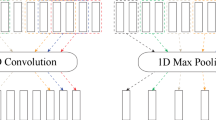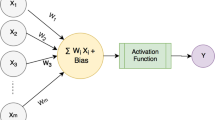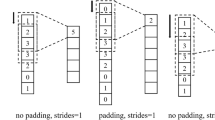Abstract
Characterizing reservoir porosity is crucial for oil and gas exploration and reservoir evaluation. Due to the increasing demands of oil and gas exploration and development, characterizing reservoir porosity to the required precision using current methods is challenging. Therefore, this study proposes a Pearson correlation–random forest (RF) scheme to select optimal seismic attributes for predicting reservoir porosity and a one-dimensional convolutional neural network–gated recurrent unit (1D CNN–GRU) joint model for reservoir porosity prediction based on well logs and seismic attribute data. First, Pearson correlation–RF is used to select the optimal combination of seismic attribute data suitable for network training. The model learns the nonlinear mapping between porosity logs at well sites and seismic attribute data. It can precisely predict three-dimensional porosity volumes by extending these mappings to nonwell areas. By performing tests near a tight sandstone reservoir, the predicted porosities of the proposed 1D CNN–GRU joint model were a better fit for true porosity values than those of single-network models. Furthermore, the proposed model obtained a laterally contiguous description of the shape and porosity distribution of the tight sandstone reservoir. By integrating advanced machine learning techniques with seismic data analysis, this method provides new approaches and ideas for wide-area porosity predictions for tight sandstone reservoirs using seismic data and opens up possibilities for more detailed and accurate subsurface mapping.
Similar content being viewed by others
References
Al-Anazi, A. F. and Gates, I. D., 2012, Support vector regression to predict porosity and permeability: Effect of sample size: Computers & Geosciences, 39(1), 64–76.
Agbadze, O. K., Qiang, C., and Jiaren, Y., 2022, Acoustic impedance and lithology-based reservoir porosity analysis using predictive machine learning algorithms: Journal of Petroleum Science & Engineering, 208, 109656.
Al Moqbel, A. and Wang, Y., 2011, Carbonate reservoir characterization with lithofacies clustering and porosity prediction: Journal of Geophysics and Engineering, 8(4), 592–598.
An, P., Cao, D., Zhao, B., et al., 2019, Reservoir physical parameters prediction based on LSTM recurrent neural network: Progress in Geophysics, 34(5), 10.
Anh, D. T., Tanim, A. H., Kushwaha, D. P., et al., 2023, Deep learning long short-term memory combined with discrete element method for porosity prediction in gravel-bed rivers: International Journal of Sediment Research, 38(1), 128–140.
Bakhorji, A., Mustafa, H., Aramco, S., et al., 2012, Rock physics modeling and analysis of elastic signatures for intermediate to low porosity sandstones, 1–5.
Chen, W., Yang, L., Zha, B., et al., 2020, Deep learning reservoir porosity prediction based on multilayer long short-term memory network: Geophysics, 85(4), WA213–WA225.
Duan, Y., Li, Y., Li, G., et al., 2016, A New Neural Network Model for Rock Porosity Prediction: 2016 International Conference on Identification, Information and Knowledge in the Internet of Things (IIKI), 26–32.
Farquhar, R. A., Somerville, J. M., and Smart, B. G. D., 1994, Porosity as a Geomechanical Indicator: An Application of Core and Log Data and Rock Mechanics: Society of Petroleum Engineers, Richardson, Texas. SPE Paper, 28853, 481–489.
Feng, R., Mejer Hansen, T., Grana, D., et al., 2020, An unsupervised deep-learning method for porosity estimation based on poststack seismic data: Geophysics, 85(6), M97–M105.
Hampson, D. P., Schuelke, J. S., and Quirein, J. A., 2001, Use of multiattribute transforms to predict log properties from seismic data: Geophysics, 66(1), 220–236.
Haskett, S. E., Narahara, G. M., and Holditch, S. A., 1988, A Method for Simultaneous Determination of Permeability and Porosity in Low-Permeability Cores: SPE Formation Evaluation, 3(03), 651–658.
Hamidi, H. and Rafati, R., 2012, Prediction of oil reservoir porosity based on BP-ANN: 2012 International Conference on Innovation Management and Technology Research, 241–246.
Jaf, P., 2015, The Estimation of Porosity and Permeability value for Well TT-4 Through Different Techniques; Well Logging, Well Testing and Core Analysis: Geo Kurdistan II.
Liu, M., Yao, D., Guo, J., et al., 2022, Reservoir Porosity Prediction Model based on Improved Shuffled Frog Leaching Algorithm and BP Neural Network: 2022 7th International Conference on Cloud Computing and Big Data Analytics (ICCCBDA), 62–66.
Na’imi, S. R., Shadizadeh, S. R., Riahi, M. A., et al., 2014, Estimation of Reservoir Porosity and Water Saturation Based on Seismic Attributes Using Support Vector Regression Approach: Journal of Applied Geophysics, 107, 93–101.
Pramanik, A. G., Singh, V., Vig, R., et al., 2004, Estimation of effective porosity using geostatistics and multiattribute transforms: A case study: Geophysics, 69(2), 352–372.
Raymer, L. L., Hunt, E. R., Gardner, J. S., 1980, An improved sonic transit time-to-porosity transform: SPWLA Annual Logging Symposium, SPWLA-1980-P.
Saputro, O. D., Maulana, Z. L., and Latief, F. D. E., 2016, Porosity Log Prediction Using Artificial Neural Network: Journal of Physics: Conference Series, 739(1), 012092.
Shi S., Shi G., Liu Z., et al., 2023, Predicting the water-yield properties of K2 limestones based on multivariate LSTM neural network: A case study of the Poli mining area in Yangquan: Coal Geology & Exploration, 51(5), 155–163.
Song, J., Ntibahanana, M., Luemba, M., et al., 2023, Ensemble Deep Learning-Based Porosity Inversion From Seismic Attributes: IEEE Access, 11, 8761–8772.
Srisutthiyakorn, N., 2016, Deep-learning methods for predicting permeability from 2D/3D binary-segmented images: SEG Technical Program Expanded Abstracts 2016, Society of Exploration Geophysicists, 3042–3046.
Wang, J., Cao, J., You, J., et al., 2020, Prediction of reservoir porosity, permeability, and saturation based on a gated recurrent unit neural network: Geophysical Prospecting for Petroleum, 59(4), 616–627.
Wyllie, M. R. J., Gregory, A. R., Gardner, L. W., 1956, Elastic wave velocities in heterogeneous and porous media: Geophysics, 21(1), 41–70.
Yang, L., Fomel, S., Wang, S., et al., 2023, Porosity and permeability prediction using a transformer and periodic long short-term network: Geophysics, 88(1), WA293–WA308.
Zhang, X., Li Q., Li L., et al., 2023, Combination of sonic wave velocity, density and electrical resistivity for joint estimation of gas-hydrate reservoir parameters and their uncertainties: Advances in Geo-Energy Research, 10(02), 133–140.
Zhang, Z., Zhang, H., Li, J., and Cai, Z., 2021, Permeability and porosity prediction using logging data in a heterogeneous dolomite reservoir: An integrated approach: Journal of Natural Gas Science and Engineering, 86(1), 103743.
Zhang, Z., Wang, Y., and Wang, P., 2021, On a Deep Learning Method of Estimating Reservoir Porosity: Mathematical Problems in Engineering.
Zou, C., Zhao, L., Xu, M., et al., 2021, Porosity Prediction With Uncertainty Quantification From Multiple Seismic Attributes Using Random Forest: Journal of Geophysical Research: Solid Earth, 126 (7).
Acknowledgments
We express our heartfelt gratitude to the editors and reviewers for their valuable comments and suggestions.
This research was jointly supported by the Fundamental Research Funds for the Central Universities (No. 2022JCCXMT01) and the Open Fund of State Key Laboratory for Fine Exploration and Intelligent Development of Coal Resources (No. SKLCRSM22DC02).
Author information
Authors and Affiliations
Corresponding author
Additional information
Shi Su-zhen, Professor at China University of Mining & Technology-Beijing. Her primary research is seismic interpretation and inversion. Email: ssz@cumtb.edu.cn
Rights and permissions
About this article
Cite this article
Shi, SZ., Shi, GF., Pei, JB. et al. Porosity prediction in tight sandstone reservoirs based on a one–dimensional convolutional neural network–gated recurrent unit model. Appl. Geophys. (2023). https://doi.org/10.1007/s11770-023-1044-9
Received:
Revised:
Published:
DOI: https://doi.org/10.1007/s11770-023-1044-9




